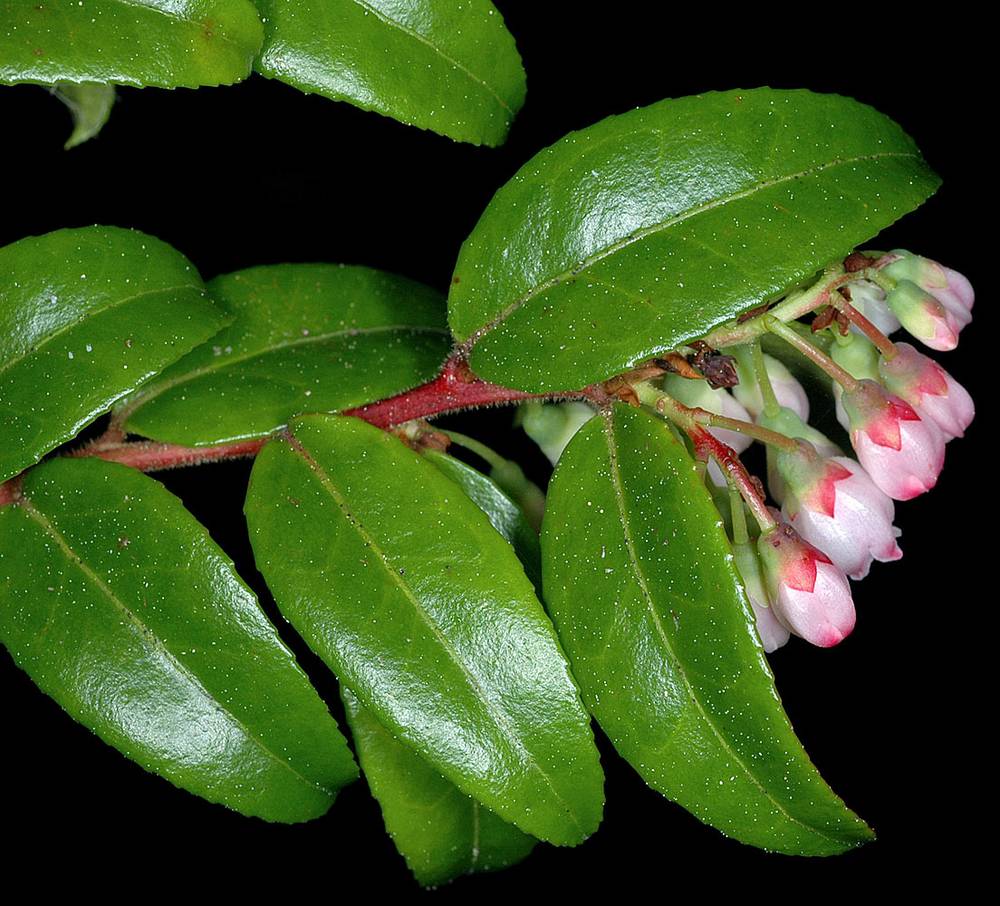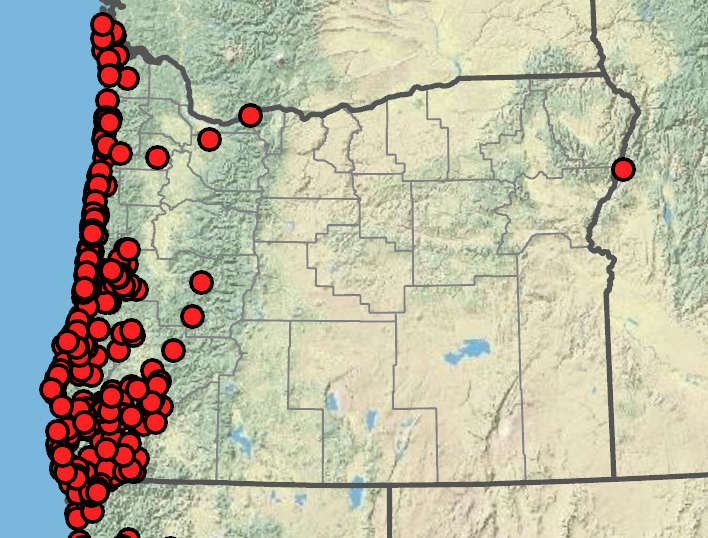Vaccinium tenellum
Vaccinium ovatum
California huckleberry, evergreen huckleberry
narrowly ovate, 15–40 × 8–20 mm, light green abaxially, green adaxially; thick; leathery; firm;
margins sharply serrate from tips to 67% or near base;
tips acute to acuminate;
surfaces abaxially sparsely glandular with blackish hairs, adaxially glabrous.
terminal racemes.
sepals 5;
calyx lobes fused at base, deltate, red, glaucous;
petals 5;
corollas campanulate to urceolate, 2.5–7 × 1.5–5 mm, pink, glabrous;
filaments pubescent.
6–9 mm in diameter, blue to black, sometimes with a bloom.
=24.
Vaccinium tenellum
Vaccinium ovatum
Coastal and occasionally inland coniferous forests. Flowering Mar–Jun. 0–800 m. CR, Est, Sisk. CA, WA; north to British Columbia, south to Mexico. Native.
The distribution of V. ovatum populations is interesting from a biogeographic perspective. In British Columbia, Washington, northern Oregon, and southern California, V. ovatum is generally found within several kilometers of the coast. However, in northern California and Mexico, populations are found up to 50 kilometers inland and in southern Oregon up to 100 kilometers inland.
Stephen Meyers
- Local floras:
BC,
CA,
OR,
WA
- Local Web sites:
CalFlora,
CalPhotos,
Flora NW,
PNW Herbaria,
Turner Photog.
WildflowerSearch
iNaturalist (observations)
USDA Plants Database
- LBJ Wildflower Center
- SEINet
- Plants of the World Online
- Encyclopedia of Life
- Wikipedia
- Google Image Search



